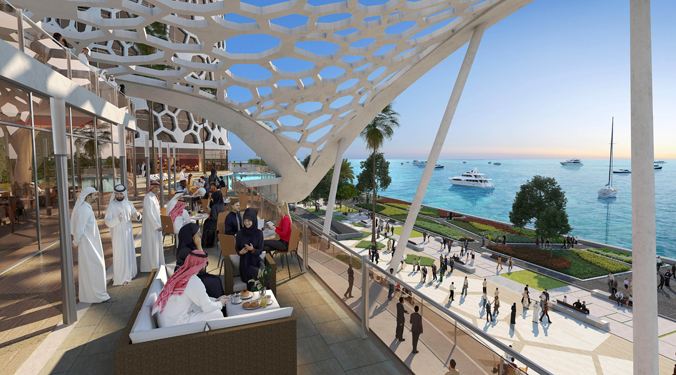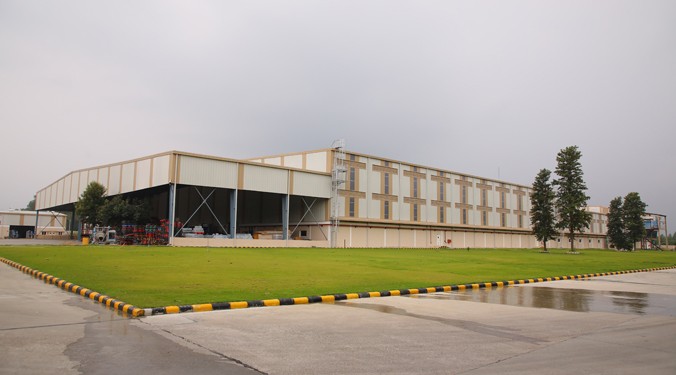Symbolic aesthetics: a bridge between two nations
RM Bridge enables Armando Rito Engenharia to improve quality of life in Angola Bridge
Rebuilding post-war infrastructureIn the aftermath of a devastating civil war, the Republic of Angola faced the daunting task of rebuilding its infrastructure. As part of this effort, Armando Rito Engenharia SA Lisbon, Portugal, was retained by the Road Institute of Angola on behalf of the Ministry of Public Works to design the 4th of April Bridge over the Catumbela River. The EUR 26 million cable-stayed bridge replaced an antiquated one-way bridge, which turned a two-hour-or-more journey between the cities of Benguela and Lobito into a 30-minute drive.
The project team used RM Bridge Bentley’s comprehensive software for bridge design and analysis, to develop the impressive cable-stayed solution, which not only improved the quality of life in this community, but also marked a remarkable engineering achievement that benefitted from a comprehensive 3D model for analysis. RM Bridge helped the team achieve technical innovations in pylon geometry, cable -stay design, and optimisation of cable-stay tensioning through all construction stages, enabling the team to design a structure that has a modern aesthetic, as well as an impressive engineering design. Opened in 2009, the bridge symbolises the end of war and the freedom of the Angolan people.
One-way bridge replaced with innovative cable-stayed bridge A former Portuguese colony, Angola is an African nation that was for decades torn by war. The civil conflict took a toll on both the people and the built environment. During those years, the road system along with a vast number of bridges ended up being destroyed or heavily damaged. Since the end of the armed conflict, the country has been rebuilding, and Armando Rito has worked in Angola since 2000 constructing about 30 bridges as part of that rebuilding.
The 4th of April Bridge is part of the highway between Benguela and Lobito, crossing the Catumbela River approximately 7 kms north of the Atlantic coast. Previously, the crossing was made using a single-lane bridge built in the early 20th century. Crossing the river seldom took nearly two hours.
To address that problem, Armando Rito proposed a new bridge that would be an aesthetically pleasing landmark, and yet demonstrate the technological advancement that symbolises Angola’s will to rebuild itself in the modern era. The bridge geometry and technical solutions, from deck to pylons, reflect not only modern structural concepts but also the country’s forward-looking vision for form and function in infrastructure.
Several constraints influenced the design of the replacement bridge. Its location in the heart of the city of Catumbela required the road profile to be low, with pronounced curves. The deck had to be slim to allow for local circulation underneath the bridge. Also, the tight schedule and seasonal flooding dictated that the piers be located outside the river, which impacted the bridge’s main span.
3D model analysis used from design to construction While Armando Rito has used RM Bridge since 2003, this was its first opportunity to use the software for the analysis of a cable-stayed bridge. The bridge’s complex geometry made the construction stage analysis and determination of optimised tensioning cable stay forces quite challenging. With help of the RM Bridge Professional Services team, the project engineers were able to accelerate the process and meet the required timeline.
Armando Rito also used RM Bridge to model the 3D cablestayed bridge and analyse the geometric attributes and design challenges within the model. This allowed the team to make more informed decisions throughout the construction process, saving time and money.
“This was an investment that not only provided important knowledge of the software usage, but also permitted an interesting exchange of ideas and concepts between developers and end-users,” said Pedro Cabral, head of the bridge department at Armando Rito Engenharia SA. “It also improved the experience and know-how about the behaviour of this kind of structure.”
The team used RM Bridge to compute the complete construction sequence, solving structural problems in the 3D model before construction began. In addition, the team used MicroStation to produce construction drawings.
The RM Bridge optimisation module ADDCON for cable-supported bridges allowed the project team to efficiently evaluate the optimal cable stay tensioning forces during all construction stages of the bridge, considering time-dependent functions (creep, shrinkage, and relaxation), and all stress operations. The innovative saddle design for the bridge provided an immediate savings of almost 15 per cent. A more conventional solution would have resulted in an increase of concrete and reinforcement quantities of 10-15 per cent plus an estimated 25 metric tonnes of structural steel for the anchorage caisson.
Technical innovation and smarter design The bridge is a cast in-situ cable-stayed bridge with a semi-fan arrangement of stays. The main span of the bridge is 160 metres, and the two side spans are both 64 metres long. The approach viaducts have multiple 30-metre spans. Together with the approach viaducts, this bridge forms a 438-metre-long, continuous structure with only two expansion joints located at the abutments.
The pre-stressed concrete pylons are U-shaped and approximately 50 metres high. They were designed in such a way as to allow them to work without the usual transverse bracing system, giving them the U-shaped configuration that contributed to the aesthetics of the bridge design. The total suspension 24.5-metre width deck is composed of two prestressed hollow-beam concrete girders. The two beams are connected transversally by the reinforced concrete top slab and by pre-stressed cross beams placed every 4 metres.
The bridge design led to some technical innovations, such as the saddle developed for the stays to allow a reduction in steel quantities and slimmer concrete masts. The stays are arranged in two planes and are constituted by bundles of individual pre-stressed steel strands. They connect to the pylons by crossing through the saddles, except on the first three stays where traditional anchorages are used. The deck anchorages are positioned at 8-metre intervals except for the four backstay cables, which are spaced at 4 metres.
Bridge between two nationsConstruction of the 4th of April Bridge began in July 2007 and was completed in July 2009. The new bridge dramatically shortened the time to cross the river and vastly improved the quality of life for those living in the region. The aesthetic of the structure signifies the freedom of Angola’s people, the end of the war, and the pride taken in modern reconstruction. It is also a symbol of the legacy left by the Portuguese to Angola. Besides being a bridge between the two banks of the Catumbela River, it is a bridge between two nations.
Cookie Consent
We use cookies to personalize your experience. By continuing to visit this website you agree to our Terms & Conditions, Privacy Policy and Cookie Policy.









